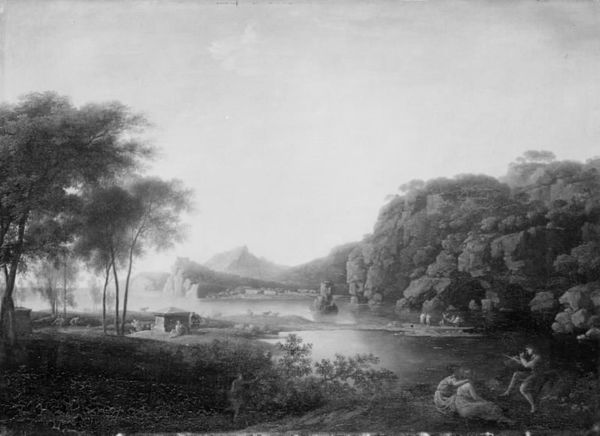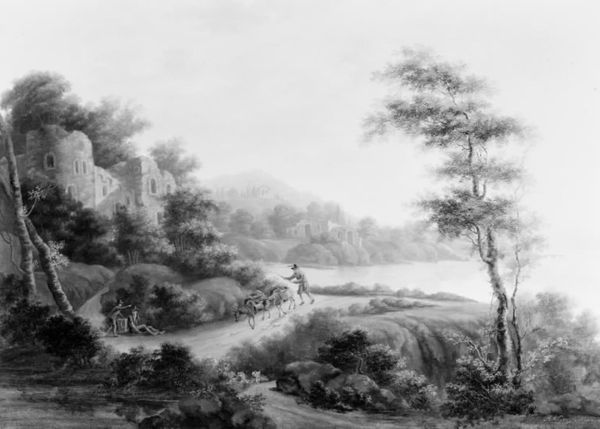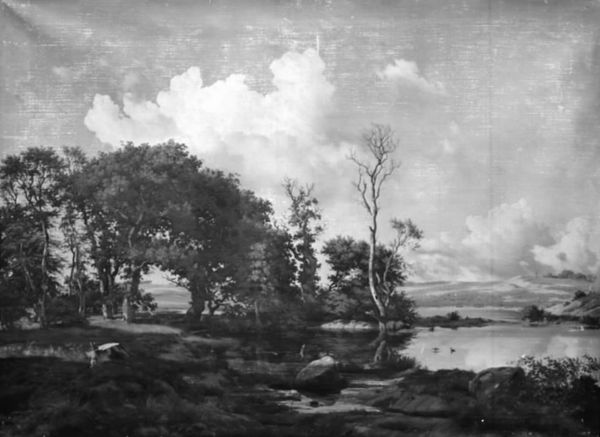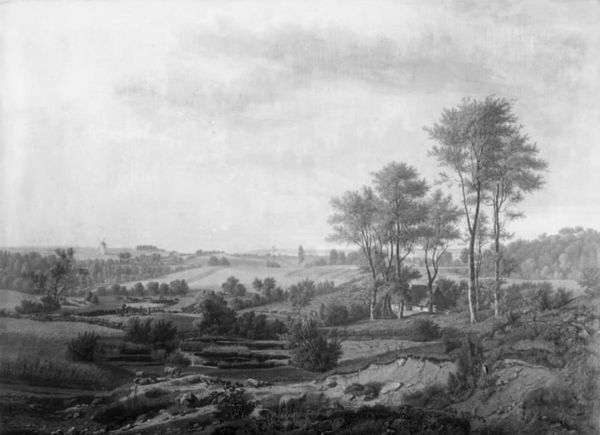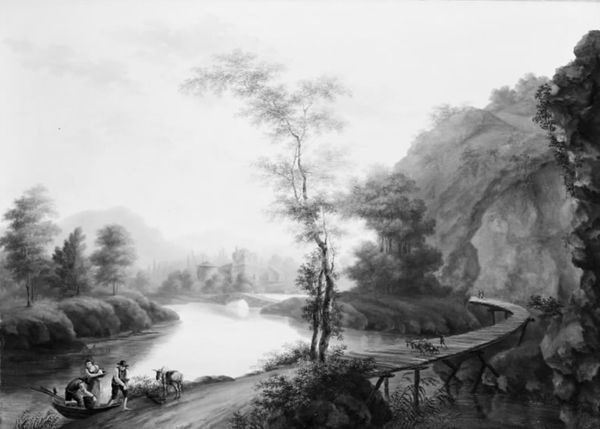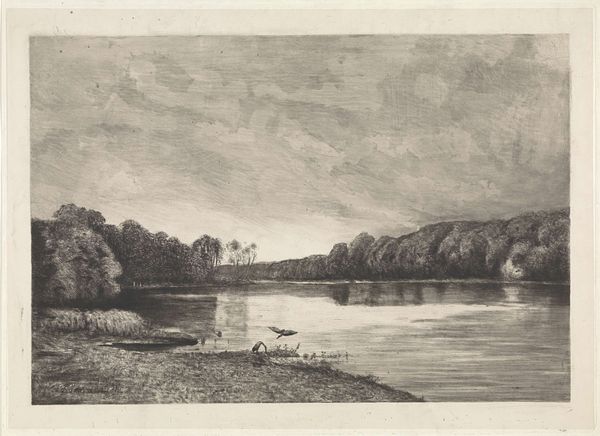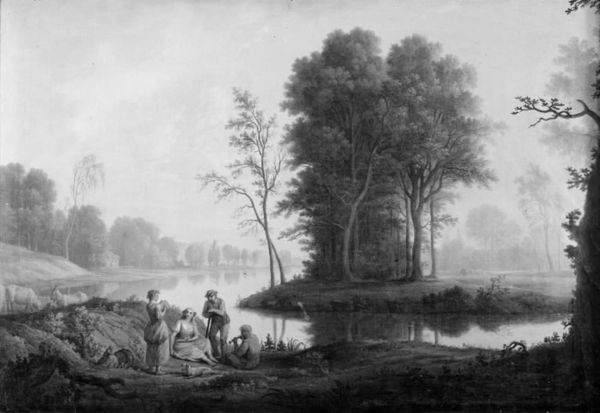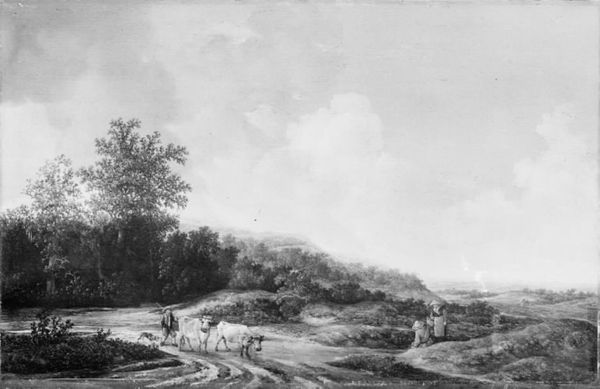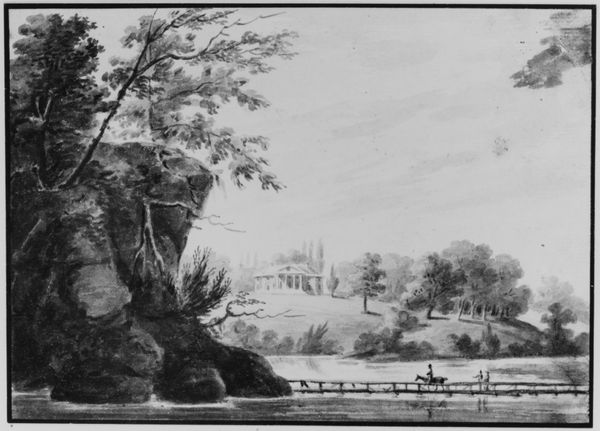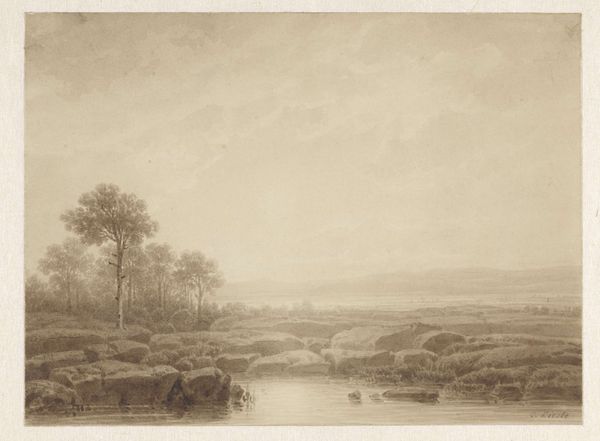
Prospekt fra Dronninggård over Furesøen. I forgrunden øen Chevallier med det kinesiske lysthus 1764 - 1790
0:00
0:00
Dimensions: 47 cm (height) x 63 cm (width) (Netto)
Curator: A peaceful, almost dreamlike vision. The reflections on the water are captivating, drawing me into the scene. Editor: Indeed. We're looking at Erik Pauelsen's tempera painting, dating from sometime between 1764 and 1790. Its full title is, "Prospekt fra Dronninggaard over Furesøen. I forgrunden øen Chevallier med det kinesiske lysthus"— a view from Dronninggaard over Furesø Lake, with Chevallier Island and its Chinese pavilion in the foreground. Curator: The "Chinese pavilion" immediately jumps out. What was the socio-political significance of placing a distinctly foreign architectural element in a Danish landscape? It disrupts a pure, local identity. Editor: It's tied to trends in the 18th century where "chinoiserie" reflected an aristocratic fascination with exotic styles and tastes, but it was also linked to global trade. The pavilion functioned as a status symbol, indicating worldly awareness and luxury consumption fueled by international networks. Curator: Interesting. The landscape itself is rather idealized, isn't it? Nature seems tamed and perfectly composed. Where does this idyllic setting intersect with real-world Danish life? Editor: These picturesque landscapes were often commissioned by wealthy landowners to visually express their control and refinement of the land, and reflect evolving ideals surrounding aesthetics. It's essential to remember these works were carefully constructed representations of a very specific, privileged perspective. The focus isn't just on the landscape, but the lifestyle enabled by that ownership. It implies societal stratification through its portrayal. Curator: So, the painting invites us to not only appreciate a serene vista but also to consider issues of class, power and the era’s artistic trends? Editor: Precisely. How taste and the fashionable styles like Chinoiserie connected directly to a network of exploitation far beyond the confines of the estate. Curator: It changes how I see the "solitude" within the frame – it isn’t just peacefulness but reflects access and the capacity for leisure of a particular group of people. Editor: Yes, this type of image acted as a validation of specific social roles and hierarchies. That's a useful lens when considering landscapes from any era.
Comments
No comments
Be the first to comment and join the conversation on the ultimate creative platform.
